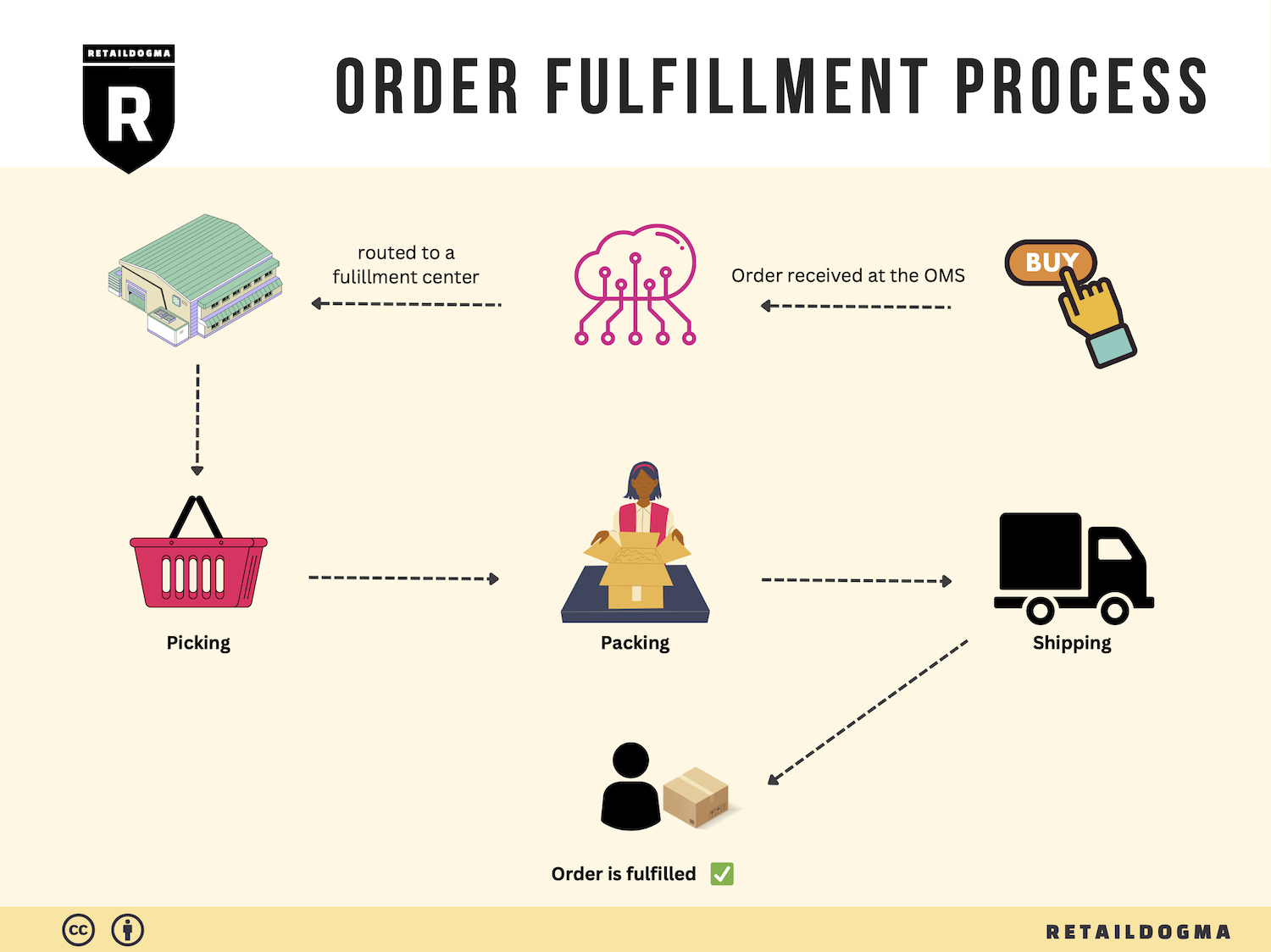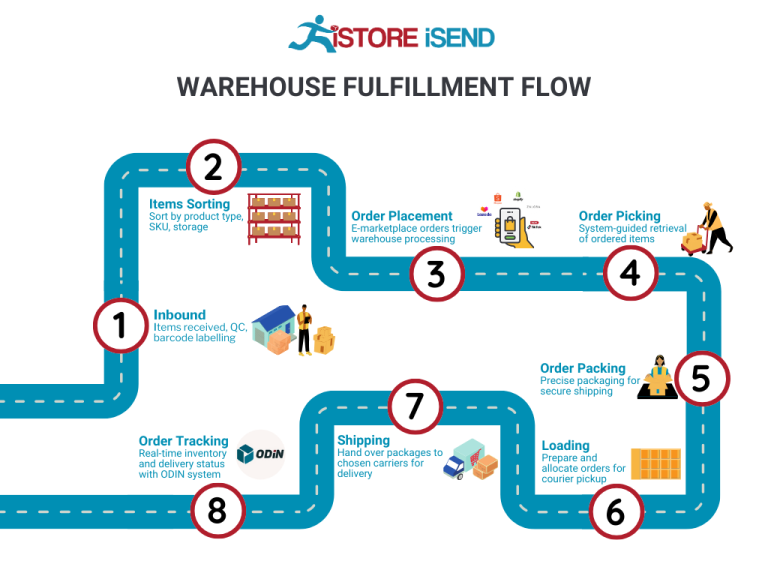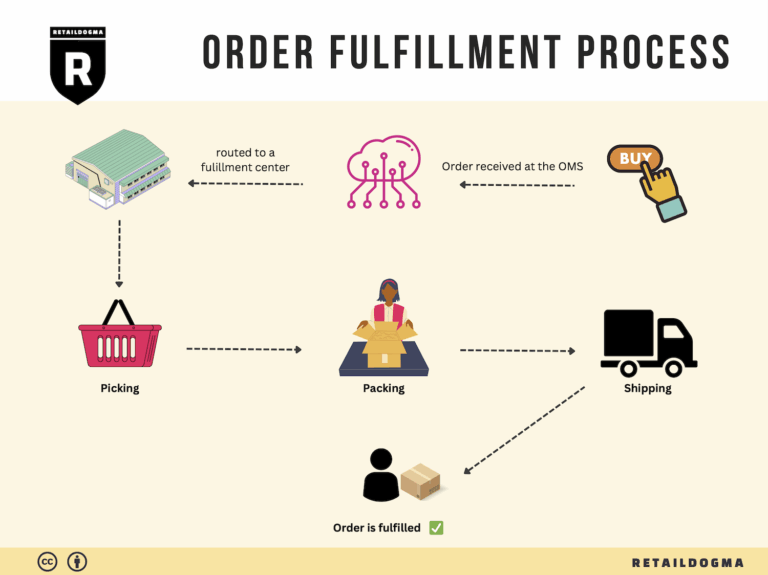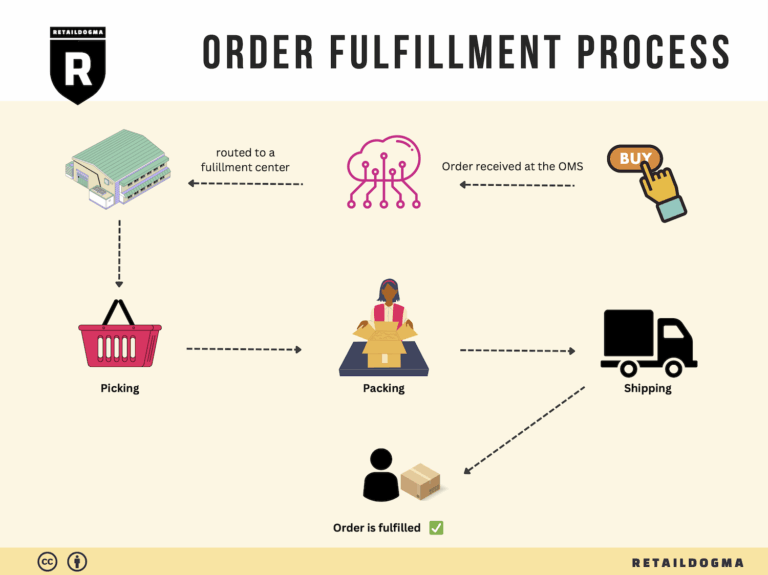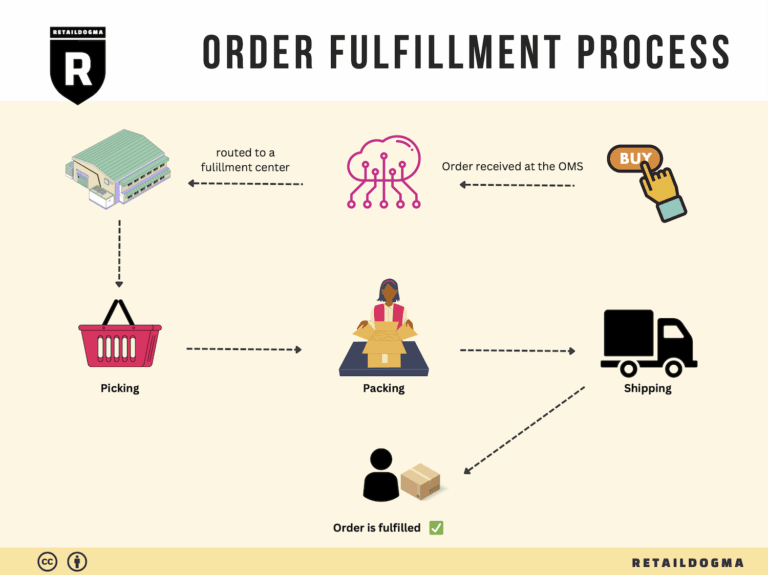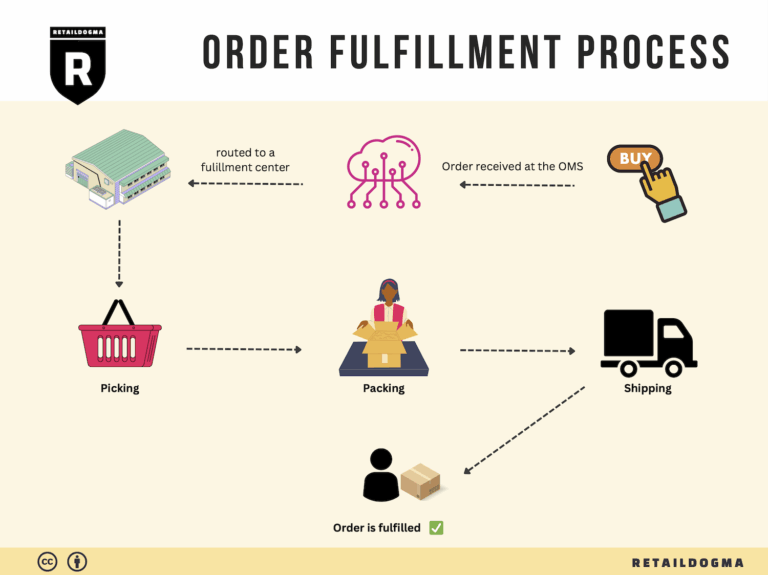Ecommerce Fulfillment Services: The Ultimate Guide (2025)
What is E-commerce Fulfillment? An Introduction for Growing Businesses
Understanding E-commerce Fulfillment: A Guide for Growing Businesses
As an e-commerce business owner, you may find yourself grappling with one of the most daunting aspects of your operations: the packing and shipping of orders. The excitement of making sales can quickly turn to stress when faced with the logistics of getting products into the hands of customers. This is where e-commerce fulfillment comes into play, serving as the backbone of your online business. Simply put, fulfillment is the process of getting a product from your inventory to your customer’s doorstep.
For growing businesses, effective fulfillment is crucial. It not only impacts customer satisfaction but also affects your operational efficiency and bottom line. In this guide, we will delve into various fulfillment models, including Third-Party Logistics (3PL) and Fulfillment by Amazon (FBA). These models offer different advantages and can greatly influence how you manage your supply chain. Understanding these options will help you identify which model aligns best with your business goals.
We will also cover the core services typically involved in e-commerce fulfillment, such as inventory management, order processing, packing, shipping, and returns handling. Each of these services plays a vital role in ensuring that your customers receive their orders promptly and in good condition.
Choosing the right fulfillment partner is another critical decision that can make or break your logistics strategy. In this guide, we will provide practical tips on what to look for in a fulfillment partner, including their experience, technology capabilities, and customer service.
Pricing is often a concern for many businesses, and understanding the cost structure of fulfillment services is essential for budgeting and planning. We will break down the various pricing models you might encounter, helping you to make informed decisions that don’t compromise your financial health.
Ultimately, our goal is to empower you with the knowledge necessary to make smart decisions regarding your logistics. By understanding e-commerce fulfillment, you can scale your operations effectively, improve customer satisfaction, and enhance your overall business performance. Whether you are new to e-commerce or looking to optimize your existing processes, this guide will serve as a valuable resource on your journey to success.
What You’ll Learn In This Guide
- What is E-commerce Fulfillment? An Introduction for Growing Businesses
- The Order Fulfillment Process: From ‘Buy’ Button to Customer’s Door
- Comparing Fulfillment Models: In-House vs. 3PL vs. Dropshipping
- A Deep Dive into Amazon FBA: Pros, Cons, and Who It’s For
- Core Services Offered by Fulfillment Centers
- How to Choose a Fulfillment Partner: A 6-Point Checklist
- Understanding Fulfillment Pricing: A Breakdown of Common Fees
- Frequently Asked Questions (FAQs) about Fulfillment
- Conclusion: Is Outsourcing Fulfillment the Right Move for Your Business?
- Important Disclaimer
The Order Fulfillment Process: From ‘Buy’ Button to Customer’s Door
1. Receiving Inventory
The order fulfillment process begins with receiving inventory at the fulfillment center. When products arrive, they are checked against purchase orders to ensure accuracy in quantity and quality. This step is crucial as it sets the foundation for the entire supply chain. Any discrepancies can lead to delays and increased costs later on.
During this stage, key terms such as SKU (Stock Keeping Unit) are vital. SKUs help in identifying and tracking products throughout the warehouse. Proper receiving practices not only streamline inventory management but also minimize errors. Efficient receiving processes contribute to a smoother workflow in subsequent steps, ensuring that products are readily available for order fulfillment.
2. Warehouse Storage
Once inventory has been received, it is stored in the warehouse. Effective warehouse storage is essential for maximizing space and ensuring that products are easily accessible when needed. This step involves categorizing products and placing them in designated areas based on their SKUs and demand frequency.
The concept of ABC Analysis is often applied here, where items are classified into three categories (A, B, C) based on their sales volume and importance. Category A items are high-value products with lower sales frequency, while Category C items are low-value but high-frequency sales items. By organizing inventory in this manner, businesses can optimize picking efficiency and reduce the time it takes to retrieve items for orders.
3. Order Picking
Order picking is the next critical step in the fulfillment process. This is where items are retrieved from storage to fulfill customer orders. Efficient picking is crucial for meeting customer expectations, especially in e-commerce, where speed and accuracy are paramount.

Businesses often utilize pick lists, which are generated based on incoming orders. These lists guide warehouse staff in selecting the correct items from the shelves. There are various picking methods, such as single order picking, batch picking, and zone picking, each suited to different operational needs. The choice of method can significantly impact the efficiency of the fulfillment process, with the goal being to minimize travel time and maximize productivity.
4. Order Packing
Once items have been picked, the next step is order packing. This process involves preparing the selected items for shipment, ensuring they are securely packaged to prevent damage during transit. Proper packing is essential not only for product safety but also for optimizing shipping costs and improving customer satisfaction.
Key considerations during packing include using appropriate packaging materials and labeling. Packaging materials should be chosen based on the nature of the product (e.g., fragile items require bubble wrap), while labels should include accurate shipping information and barcodes for tracking. Effective packing processes reduce the likelihood of returns and enhance the overall customer experience, as well-packed orders arrive in excellent condition.
5. Shipping & Delivery
The final step in the order fulfillment process is shipping and delivery. Once orders are packed, they are handed over to shipping carriers for delivery to the customer. This stage is critical as it directly impacts the customer’s experience and satisfaction with the service.
Choosing the right shipping method is essential, and businesses often rely on shipping software to streamline this process. This software can help in comparing rates from different carriers, tracking shipments, and managing delivery timelines. Timely delivery is particularly important in the age of e-commerce, where customers expect fast and reliable shipping. Additionally, providing tracking information to customers enhances transparency and builds trust in the brand.
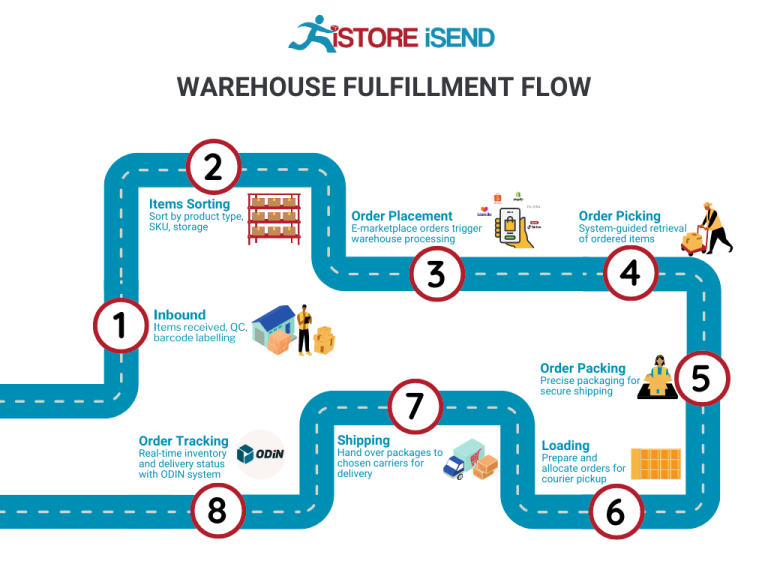
In summary, the order fulfillment process is a complex but essential aspect of e-commerce operations. Each step, from receiving inventory to shipping and delivery, plays a vital role in ensuring that customer expectations are met. By optimizing each phase, businesses can improve efficiency, reduce costs, and ultimately drive customer satisfaction, paving the way for scalable growth in the competitive e-commerce landscape.
Comparing Fulfillment Models: In-House vs. 3PL vs. Dropshipping
Fulfillment Model Comparison
| Model | Who Handles Inventory | Best For (Business Stage) | Key Advantage | Key Disadvantage |
|---|---|---|---|---|
| In-House Fulfillment | The business itself | Established businesses | Full control over operations | High overhead costs and resource demands |
| Third-Party Logistics (3PL) | An external logistics provider | Growing businesses | Scalable solutions and expertise | Less control over inventory and processes |
| Dropshipping | Suppliers or manufacturers | Startups and small businesses | Low overhead and minimal risk | Lower profit margins and reliance on suppliers |
In-House Fulfillment
In-house fulfillment involves managing the entire inventory and shipping process within your own facilities. This model is typically adopted by established businesses that have the resources and capacity to handle logistics internally. The primary advantage of in-house fulfillment is that it allows for complete control over operations, from inventory management to shipping. Businesses can tailor their processes to meet specific customer needs, ensuring a high level of service quality. Moreover, having direct oversight means that any issues can be resolved swiftly without the need for communication with an external party.
However, in-house fulfillment comes with significant disadvantages. The initial investment in warehouse space, technology, and personnel can be substantial, often leading to high overhead costs. Additionally, businesses must manage staffing, training, and the complexities of logistics, which can strain resources, especially during peak seasons. As a result, in-house fulfillment is best suited for established businesses that can afford the investment and have the necessary infrastructure to support it.
Third-Party Logistics (3PL)
Third-party logistics (3PL) involves outsourcing the inventory and shipping functions to an external logistics provider. This model is particularly beneficial for growing businesses that require scalable solutions without the burden of managing logistics internally. By partnering with a 3PL, companies can leverage the expertise and infrastructure of logistics specialists, which can lead to improved efficiency and reduced shipping costs.
One of the key advantages of using a 3PL is the scalability it offers. As businesses grow, they can easily adjust their logistics needs without needing to invest in additional facilities or staff. Moreover, 3PL providers often have access to advanced technology and logistics networks, enabling faster delivery times and improved customer satisfaction. However, the downside is that businesses relinquish some control over their inventory and shipping processes. This can lead to potential challenges in quality assurance and communication, particularly if the 3PL does not align perfectly with the company’s operational standards.
Dropshipping
Dropshipping is a fulfillment model where the retailer does not hold inventory but instead relies on suppliers or manufacturers to fulfill orders directly to customers. This model is especially appealing for startups and small businesses that want to minimize risk and overhead costs. By not investing in inventory upfront, businesses can offer a wide range of products without the financial burden of stocking items.
The primary advantage of dropshipping is its low overhead; businesses only pay for products after they’ve made a sale. This flexibility allows entrepreneurs to experiment with different products and markets without significant financial commitment. However, dropshipping can also present challenges, such as lower profit margins and dependency on suppliers for inventory and shipping. Since the retailer does not have direct control over the fulfillment process, issues such as stockouts or shipping delays can negatively impact customer satisfaction and brand reputation.
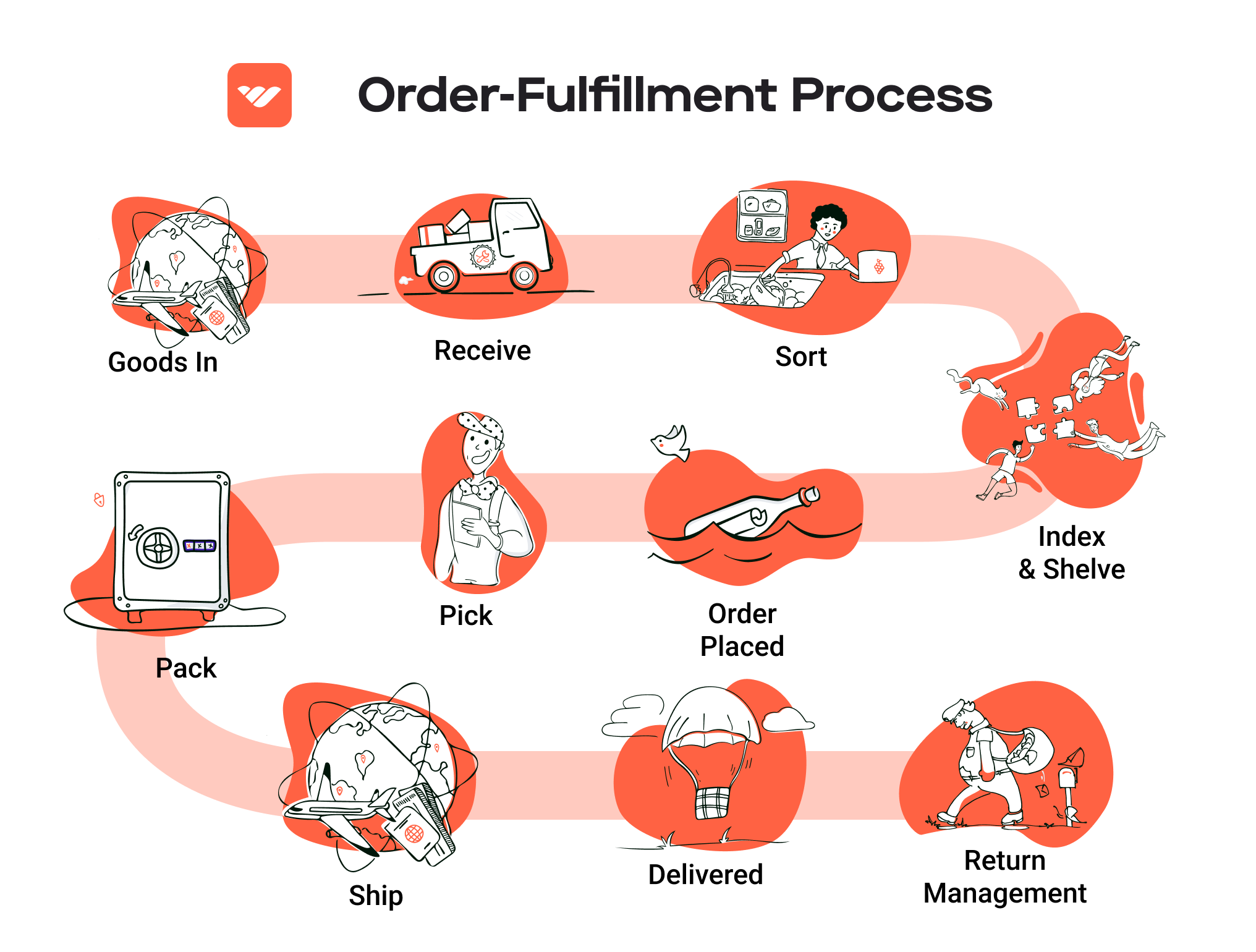
Conclusion
When choosing a fulfillment model, businesses must carefully consider their stage of growth, resource availability, and customer service priorities. In-house fulfillment offers control and customization but requires substantial investment. Third-party logistics provide scalability and expertise, making them suitable for growing businesses but at the cost of some control. Dropshipping minimizes risk and overhead, ideal for startups, yet involves lower profit margins and reliance on external suppliers. Each model has its strengths and weaknesses, and the right choice will depend on the specific needs and goals of the business.
A Deep Dive into Amazon FBA: Pros, Cons, and Who It’s For
What is Fulfillment by Amazon (FBA)?
Fulfillment by Amazon (FBA) is a service that allows e-commerce sellers to store their products in Amazon’s extensive network of fulfillment centers. Amazon takes responsibility for storing, packaging, and shipping products directly to customers on behalf of sellers. This service has transformed the way businesses operate by leveraging Amazon’s sophisticated logistics infrastructure, enabling sellers to scale their operations and reach a broader audience.
When a customer places an order for a product fulfilled through FBA, Amazon handles the entire process—from picking the item from the warehouse to packing it and shipping it to the customer. This integration offers sellers access to Amazon’s customer service and returns management, enhancing the overall shopping experience for buyers.
How Does FBA Work?
-
Product Preparation and Shipping: Sellers prepare their products according to Amazon’s guidelines, which include labeling, packaging, and ensuring that items are in good condition. Once prepared, sellers ship their inventory to Amazon’s fulfillment centers.
-
Storage: Products are stored in Amazon’s warehouses until they are sold. Sellers can monitor their inventory levels through the Amazon Seller Central platform.
-
Order Fulfillment: When a customer orders a product, Amazon picks, packs, and ships the item. This process is typically quick, allowing sellers to meet customer expectations for fast shipping.
-
Customer Service and Returns: Amazon also manages customer service inquiries and returns for FBA orders, which can be a significant time-saver for sellers.
-
Payments: Once the order is fulfilled, Amazon processes payments and deposits the proceeds into the seller’s account, minus the FBA fees.
Pros of Using FBA
1. Prime Eligibility
FBA products are eligible for Amazon Prime, which allows sellers to tap into a large customer base that values quick and free shipping options. Prime members are often willing to pay a premium for products that can be delivered quickly, which can lead to increased sales for FBA sellers.
2. Customer Trust
Products fulfilled by Amazon benefit from the trust associated with the Amazon brand. Customers are more likely to purchase from sellers using FBA due to the assurance of reliable shipping, returns, and customer service.
3. Multi-Channel Fulfillment
FBA isn’t limited to Amazon alone; sellers can use FBA to fulfill orders from other sales channels, such as their own websites or other e-commerce platforms. This flexibility allows businesses to streamline their logistics processes across different sales channels.
4. Scalability
FBA allows businesses to scale rapidly without the need for significant investment in infrastructure. Sellers can increase their inventory and expand their product offerings without worrying about storage or logistics.
5. Time-Saving
By outsourcing fulfillment to Amazon, sellers can focus on other critical aspects of their business, such as marketing and product development, rather than logistics and customer service.
Cons of Using FBA
1. High Fees
While FBA provides numerous advantages, it comes with associated costs. Sellers must pay for storage fees (which can increase during peak seasons) and fulfillment fees for each item sold. These costs can significantly eat into profit margins, especially for low-cost items.
2. Strict Inventory Rules
Amazon has stringent inventory management policies, including limits on how much inventory can be sent to their warehouses. This can be particularly challenging for seasonal products or during periods of high demand.
3. Commingling Risks
FBA allows for the commingling of inventory, meaning that the products of different sellers may be stored together. This can lead to issues where a seller receives negative feedback due to receiving a defective product that was not theirs, which can harm their reputation.
4. Loss of Control
Sellers relinquish a degree of control over their logistics and customer service. Any issues that arise during fulfillment may reflect poorly on the seller, even if they are due to Amazon’s processes.
5. Limited Branding Opportunities
When using FBA, products are often packaged in Amazon-branded boxes, which can limit sellers’ opportunities to create a unique brand experience for their customers.
Who is FBA Best For?
Fulfillment by Amazon is particularly well-suited for small to medium-sized businesses looking to scale without the overhead of managing their own warehousing and logistics. It is also ideal for:
-
E-commerce Entrepreneurs: Those who are starting out and want to leverage Amazon’s infrastructure to reach a larger audience without heavy investments.
-
Seasonal Sellers: Businesses with seasonal products can benefit from FBA’s ability to handle fluctuations in inventory and order volume.
-
Multi-Channel Sellers: Companies that sell on multiple platforms and want to streamline their fulfillment processes will find FBA advantageous.
-
Businesses Seeking Growth: Sellers looking to expand their product lines or geographical reach can use FBA to facilitate growth without the hassle of logistics.
In conclusion, while FBA offers significant advantages in terms of scalability, customer trust, and logistics management, potential users should carefully consider the associated costs and operational challenges. Each business should evaluate whether the benefits align with their growth strategy and operational capabilities.
Core Services Offered by Fulfillment Centers
Inventory Management & Warehousing
Inventory management and warehousing are foundational services offered by fulfillment centers that play a crucial role in the e-commerce supply chain. Fulfillment centers provide businesses with a dedicated space to store their products securely. This service is not merely about storing goods; it encompasses sophisticated inventory management systems that track stock levels, monitor product conditions, and manage reordering processes.
The benefit of effective inventory management is multifaceted. Firstly, it helps businesses maintain optimal stock levels, preventing overstocking or stockouts, which can lead to lost sales or increased holding costs. With real-time inventory tracking, e-commerce businesses can gain insights into sales trends, allowing for informed decision-making about purchasing and promotional strategies. Additionally, fulfillment centers often utilize advanced technology, such as RFID and barcoding systems, to ensure accuracy and efficiency in inventory handling. This not only streamlines operations but also enhances customer satisfaction by ensuring that products are available when needed.
Pick and Pack Services
Pick and pack services are integral to the fulfillment process, where items are selected from the warehouse and packaged for shipment to customers. This service involves several steps: picking the right items based on customer orders, packing them securely to prevent damage during transit, and labeling packages correctly for shipment.
The primary benefit of pick and pack services is the efficiency it brings to order fulfillment. For e-commerce businesses, speed is critical; customers expect fast delivery times. Fulfillment centers employ trained staff and sophisticated picking technologies to ensure that orders are processed quickly and accurately. By outsourcing this process, businesses can focus on their core competencies, such as marketing and customer service, while leaving the logistics to experts. Furthermore, efficient pick and pack operations reduce the likelihood of errors, which can lead to costly returns and diminished customer trust.
Kitting and Assembly
Kitting and assembly services involve the process of combining multiple products into a single package or kit. This service is particularly beneficial for businesses that offer bundled products or promotional items. For example, a fulfillment center can assemble a gift set that includes various skincare products, or create a seasonal package that combines holiday-themed items.
The benefit of kitting and assembly is that it simplifies the order fulfillment process for businesses. By creating kits in advance, companies can reduce the time spent on order processing and improve order accuracy. This service also enhances the customer experience by delivering well-packaged, ready-to-use products, which can increase customer satisfaction and loyalty. Furthermore, kitting can lead to cost savings in shipping and packaging, as multiple items can be shipped together, reducing overall shipping fees.
Returns Management (Reverse Logistics)
Returns management, or reverse logistics, is a crucial service that fulfillment centers provide to handle product returns efficiently. This process involves receiving returned items, assessing their condition, and determining the appropriate next steps—whether that be restocking, refurbishing, or disposing of the items.
The importance of effective returns management cannot be overstated, as returns are a common aspect of e-commerce. A streamlined return process enhances customer satisfaction by making it easy for customers to return unwanted or defective products. Fulfillment centers often have established procedures and technology in place to handle returns quickly, which minimizes the impact on inventory levels and cash flow for businesses. Additionally, by analyzing return data, e-commerce businesses can identify patterns and make informed decisions about product quality, customer preferences, and potential improvements in their offerings.
In conclusion, partnering with a fulfillment center that offers these core services can significantly enhance the efficiency and effectiveness of an e-commerce business’s operations. From inventory management to returns processing, these services not only streamline logistics but also contribute to improved customer satisfaction and business growth. As e-commerce continues to evolve, leveraging the expertise of fulfillment centers will be a key strategy for businesses aiming to scale successfully.
How to Choose a Fulfillment Partner: A 6-Point Checklist
Location & Warehouse Network
Importance: The geographical location of your fulfillment partner can significantly impact shipping times, costs, and overall customer satisfaction. A partner with a strategically located warehouse network can help ensure faster delivery and lower shipping expenses.
Questions to Ask:
– Where are your fulfillment centers located, and how do they align with my target customer base?
– Can you provide a map of your warehouse network?
– What is your average shipping time to major metropolitan areas?
– How do you handle shipping for international orders?
Technology & Integrations
Importance: In today’s digital landscape, a robust technology platform is essential for streamlining operations, tracking inventory, and managing orders. Integrations with existing e-commerce platforms can enhance efficiency and reduce errors.
Questions to Ask:
– What technology platform do you use for inventory management, and how does it integrate with my e-commerce system?
– Can your system provide real-time inventory updates?
– How do you handle order tracking and notifications?
– Are there any additional fees for using your technology or integrations?
Specializations (e.g., Cold Storage, Oversized Items)
Importance: Depending on the nature of your products, you may require specialized services such as cold storage, handling oversized items, or specific packaging needs. Choosing a partner with the right capabilities can prevent damage and ensure compliance with regulations.
Questions to Ask:
– Do you have the capability to handle specialized products (e.g., perishables, hazardous materials)?
– What types of storage solutions do you offer?
– How do you ensure product safety and compliance with industry regulations?
– Can you provide examples of similar products you have successfully managed?
Scalability & Capacity
Importance: As your business grows, your fulfillment needs will change. It’s crucial to partner with a fulfillment center that can scale alongside your operations without compromising service quality.
Questions to Ask:
– What is your current capacity, and how quickly can you scale if my order volume increases?
– Have you handled peak seasons, and how do you manage increased demand during those times?
– What systems do you have in place to ensure consistent service during scaling?
– Can you provide a case study of how you’ve successfully scaled for another client?
Pricing and Contracts
Importance: Understanding the cost structure and contractual obligations of your fulfillment partner is critical to maintaining profitability. Transparency in pricing can help you avoid unexpected fees and ensure that you can budget effectively.
Questions to Ask:
– What is included in your pricing model? Are there additional fees for services like storage, packing, or shipping?
– How do you handle pricing adjustments during contract renewals?
– What is the duration of the contract, and what are the terms for early termination?
– Can you provide a breakdown of all potential costs associated with your services?
Customer Support & Reviews
Importance: Exceptional customer support is vital for addressing issues quickly and maintaining smooth operations. Additionally, reviewing feedback from other businesses can provide insights into the partner’s reliability and service quality.
Questions to Ask:
– What customer support channels do you offer (e.g., phone, email, chat)?
– What are your average response times for support inquiries?
– Can you provide references or case studies from current clients?
– How do you handle disputes or issues that arise during fulfillment?
By carefully evaluating these six critical factors, e-commerce business owners, operations managers, and entrepreneurs can make informed decisions when selecting a fulfillment partner. This checklist serves as a practical guide to help navigate the complexities of third-party logistics (3PL) and ensure that your chosen partner aligns with your business goals and operational needs.
Understanding Fulfillment Pricing: A Breakdown of Common Fees
Initial Setup Fees
Initial setup fees are the costs incurred when you first engage a fulfillment service provider, such as ACY5 Amazon Fulfillment Center. This fee often includes account setup, onboarding, and any necessary integrations with your existing systems. The amount can vary significantly based on the complexity of your operations and the specific services you require.
To calculate this fee, providers typically assess the time and resources needed to establish your account, which may involve configuring software systems, training staff, and performing initial inventory assessments. Expect to pay anywhere from a few hundred to several thousand dollars, depending on the provider and the services included in the setup.
Receiving Fees
Receiving fees are charged when your inventory arrives at the fulfillment center. This fee covers the labor and equipment costs associated with unloading, inspecting, and organizing your products within the warehouse.
Calculating receiving fees usually involves a per-unit or per-pallet charge. Some providers may also have a minimum fee for smaller shipments. For example, if a fulfillment center charges $0.25 per unit and you send 1,000 units, your total receiving fee would be $250.
Storage Fees (per pallet/bin)
Storage fees are ongoing costs associated with keeping your inventory at the fulfillment center. These fees are typically calculated on a per-pallet or per-bin basis and can vary depending on the type of products stored and the duration of storage.
Most fulfillment centers charge monthly storage fees, which can range from $10 to $30 per pallet, depending on the location and market demand. For instance, if you store ten pallets for a month at a rate of $15 per pallet, your storage fee would be $150. Be aware that some centers may also impose long-term storage fees for items stored beyond a certain period (e.g., 6 months), which can incentivize businesses to manage their inventory effectively.
Pick & Pack Fees (per item/order)
Pick and pack fees are charged for the labor involved in selecting items from inventory and preparing them for shipment. This fee can be structured either as a per-item charge or a flat fee per order.
The calculation can vary significantly between providers; for instance, a fulfillment center might charge $1.00 per item for picking and an additional $0.50 for packing. Therefore, if an order consists of three items, the pick and pack fee would total $4.50. It’s crucial to evaluate your product mix and typical order sizes to estimate these costs accurately.
Shipping Fees
Shipping fees encompass the costs associated with delivering the orders to your customers. These fees can vary widely based on several factors, including the shipping carrier, package weight, dimensions, and destination.
Fulfillment centers typically offer discounted shipping rates due to their volume and partnerships with major carriers. The calculation often involves a base rate plus additional charges based on the package specifics. For example, a fulfillment center may charge a flat fee for local deliveries, while interstate or international shipments may incur additional costs.
To get an accurate shipping quote, you should provide the fulfillment center with detailed information about your products, including weights, dimensions, and typical shipping destinations.
Tips for Getting an Accurate Quote
-
Be Transparent: Provide potential fulfillment partners with comprehensive information about your product range, order volumes, and any special handling requirements.
-
Request Itemized Pricing: Ask for a detailed breakdown of all potential fees, including any variable costs based on order size or storage duration.
-
Consider Seasonal Variability: Discuss how fees may fluctuate during peak seasons, such as holidays, and how to prepare for those changes.
-
Negotiate Terms: Don’t hesitate to negotiate pricing, especially if you anticipate a long-term partnership or have significant order volumes.
-
Review Contracts Carefully: Ensure you understand all terms, especially those related to unexpected fees or changes in pricing structures.
By understanding these common fulfillment pricing models, e-commerce business owners can make informed decisions that align with their operational needs and budget constraints, ultimately contributing to their growth and success in the competitive online marketplace.
Frequently Asked Questions (FAQs) about Fulfillment
1. What is the ACY5 Amazon Fulfillment Center?
The ACY5 Amazon Fulfillment Center is a logistics hub located in Logan Township, NJ. It plays a crucial role in Amazon’s supply chain by receiving, storing, and shipping products for third-party sellers using Amazon’s Fulfillment by Amazon (FBA) service.
2. What are the operating hours of ACY5?
The ACY5 Fulfillment Center operates 24 hours a day, seven days a week. However, it’s advisable to check for any specific changes or holiday schedules directly with the facility.
3. How can I report issues at the ACY5 Fulfillment Center?
Issues can be reported to on-site management or security personnel. They are trained to address concerns and assist as needed. It’s important to communicate any problems immediately to ensure timely resolution.
4. Are there amenities available for drivers at ACY5?
Yes, the ACY5 Fulfillment Center has designated waiting areas for drivers as well as restroom facilities. However, feedback suggests that there may be room for improvement in the overall amenities provided.
5. What’s the difference between a warehouse and a fulfillment center?
A warehouse primarily serves as a storage space for goods, while a fulfillment center is designed for the entire process of receiving, processing, and shipping orders to customers. Fulfillment centers often include additional services such as order picking, packing, and shipping, which are critical for e-commerce operations.
6. What is a 3PL (Third-Party Logistics)?
A 3PL is a service provider that manages logistics and supply chain operations for businesses. This includes warehousing, fulfillment, and transportation services. Using a 3PL allows businesses to focus on core activities while outsourcing complex logistics tasks.
7. How much do fulfillment services typically cost?
Fulfillment service costs can vary widely based on several factors, including the volume of orders, the size and weight of products, storage fees, and specific services required (like picking and packing). On average, businesses can expect to pay anywhere from $2 to $5 per order, plus additional storage fees that can range from $0.50 to $2.00 per cubic foot per month.
8. What types of products can be stored at ACY5?
The ACY5 Fulfillment Center can accommodate a wide range of products, including electronics, household goods, clothing, and more. However, there are restrictions on hazardous materials and perishable items. It is advisable to consult with Amazon’s guidelines for specific product categories.
9. How does ACY5 support Amazon Prime shipping?
The ACY5 Fulfillment Center is part of Amazon’s extensive network that enables sellers to utilize the Fulfillment by Amazon (FBA) program. This allows eligible products to be shipped to Prime members within two days, significantly enhancing the seller’s reach and customer satisfaction.
10. What are the advantages of using ACY5 for fulfillment?
Using the ACY5 Fulfillment Center offers several advantages, including access to Amazon’s logistics infrastructure, the ability to leverage Amazon Prime shipping for faster delivery, and the support of a dedicated staff. However, businesses should also be aware of mixed reviews regarding management practices and security professionalism, which may impact operational efficiency.
Conclusion: Is Outsourcing Fulfillment the Right Move for Your Business?
Evaluating the Benefits of Outsourcing Fulfillment
Outsourcing fulfillment can be a transformative decision for e-commerce businesses looking to streamline operations and scale effectively. One of the primary benefits is the significant time savings it offers. By delegating logistics to a specialized fulfillment partner, business owners can redirect their focus toward core activities like marketing, product development, and customer engagement. This shift not only enhances productivity but also allows for a more strategic approach to growth.
Another compelling advantage is scalability. As your business grows, so do your fulfillment needs. A proficient fulfillment service, such as those offered at ACY5 Amazon Fulfillment Center, can easily adapt to increasing order volumes, seasonal spikes, and new product launches. This flexibility ensures that you can meet customer demand without the overhead costs of maintaining an in-house operation.
Moreover, partnering with an experienced fulfillment provider brings expertise that can significantly enhance your logistics processes. These professionals are well-versed in inventory management, order processing, and shipping logistics, which can lead to improved delivery times and customer satisfaction. With their established networks and technologies, fulfillment centers can often provide better shipping rates and options than businesses could achieve independently.
Choosing the Right Partner for Growth
However, not all fulfillment partners are created equal. It is crucial to conduct thorough due diligence to select a partner that aligns with your business goals and values. Look for providers that demonstrate reliability, efficiency, and a commitment to customer service. Facilities like ACY5 have received mixed reviews, highlighting the importance of evaluating potential partners based on feedback and operational practices.
Take Action Today
As you contemplate whether outsourcing fulfillment is the right move for your business, consider conducting a thorough audit of your current shipping processes. Identify pain points, inefficiencies, and areas where a fulfillment partner could add value. This strategic assessment will help you make an informed decision about whether to embrace outsourcing as a pathway to growth and success in the competitive e-commerce landscape.
Important Disclaimer
⚠️ Important Disclaimer
The information in this guide is for educational purposes. Fulfillment services, pricing, and platform features change frequently. Always conduct your own due diligence and consult with providers directly before making business decisions.
